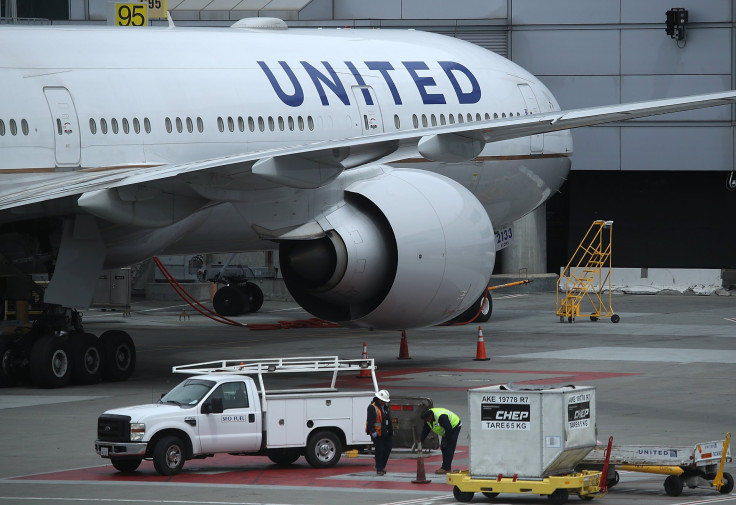United Airlines Ends A Spectacular 2018 With A Flourish

A year ago, executives at airline giant United Continental (NASDAQ:UAL) revealed an ambitious plan to accelerate the carrier's growth rate. United's strategy of expanding capacity 4% to 6% annually between 2018 and 2020 seemed extremely risky and likely to spark competitive responses from rivals like Delta Air Lines (NYSE:DAL).
However, United Airlines executed this strategy almost flawlessly during 2018, delivering strong unit revenue and earnings growth. The company's momentum continued in the fourth quarter. That said, United still isn't performing at the same level as Delta.
United Knocks It Out Of The Park In Q4
Between early December and early January, Delta and American Airlines were both forced to temper their revenue per available seat mile (RASM) forecasts for the fourth quarter. Delta ultimately posted a 3.2% RASM increase, compared with its initial guidance for 3% to 5% growth. American Airlines hasn't reported its results yet, but it acknowledged earlier this month that Q4 RASM would probably come in near the low end of its forecast, for a 1.5% to 3.5% increase.
By contrast, United Airlines achieved a solid 5% increase in passenger revenue per available seat mile (PRASM) -- a similar metric -- in the fourth quarter. That result reached the high end of its guidance range. Unit revenue trends were solid in all regions of the world.
Meanwhile, United's adjusted nonfuel unit costs declined slightly last quarter. And while its average fuel price jumped by 20%, the company still managed to expand its adjusted pre-tax margin to 7.8%, up from 6.9% a year earlier. Adjusted earnings per share soared 67% to $2.41, driven by a combination of higher revenue, margin expansion, a lower tax rate, and the impact of share repurchases.
For the full year, adjusted EPS reached $9.13, beating United's most recent guidance. Even more impressively, this surpassed the $6.50-to-$8.50 guidance range that the company provided at the beginning of 2018, despite a sharp increase in fuel prices over the course of the year.
Reading The Tea Leaves
United Airlines expects its recent earnings momentum to continue in 2019, with adjusted EPS rising to a range of $10 to $12. That said, it appears to be facing the same type of unit revenue slowdown as Delta Air Lines.
Delta disappointed investors last week with its forecast that RASM will increase 0% to 2% in the first quarter. United's forecast is similar, calling for 0% to 3% PRASM growth this quarter, along with $810 million to $910 million of cargo and other revenue, compared with $883 million in the prior-year period.
Both carriers' full-year outlooks are quite strong. But between fuel-price volatility, the ongoing government shutdown, Brexit, and other macroeconomic issues, business-focused airlines like Delta and United can't be very sure of their 2019 forecasts. Investors will have to wait and see how business conditions evolve over the course of the year.
There's Still A Clear Margin Gap
Despite the recent pullback in jet fuel prices and United's revenue momentum, United Continental currently expects to log a narrow adjusted pre-tax margin between 2.5% and 4.5% in the first quarter. That's far below Delta's projection for a 6.5% to 8.5% adjusted pre-tax margin.
Furthermore, United's full-year guidance implies a profit of around $3 billion, whereas Delta's forecast that EPS will reach $6 to $7 suggests that its full-year profit will exceed $4 billion. Given that the two airlines are relatively similar in size, the discrepancy means that Delta has a roughly 4-percentage-point margin advantage over its rival.
On the bright side, the margin gap has been closer to 5 percentage points on average in recent years. Thus, United has already improved its relative performance modestly.
Looking ahead, the relative trajectories of these two airline stocks will depend on whether United Airlines can keep moving closer to Delta in terms of profitability. Delta Air Lines stock trades at a slightly lower earnings multiple than United Continental stock right now, even though Delta generates higher margins and has a stronger balance sheet. That puts a lot of pressure on United to keep surpassing its revenue and earnings forecasts in 2019 and beyond.
This article originally appeared in the Motley Fool.
Adam Levine-Weinberg owns shares of Delta Air Lines and is long January 2020 $20 calls on American Airlines Group. The Motley Fool owns shares of Delta Air Lines. The Motley Fool has a disclosure policy.





















